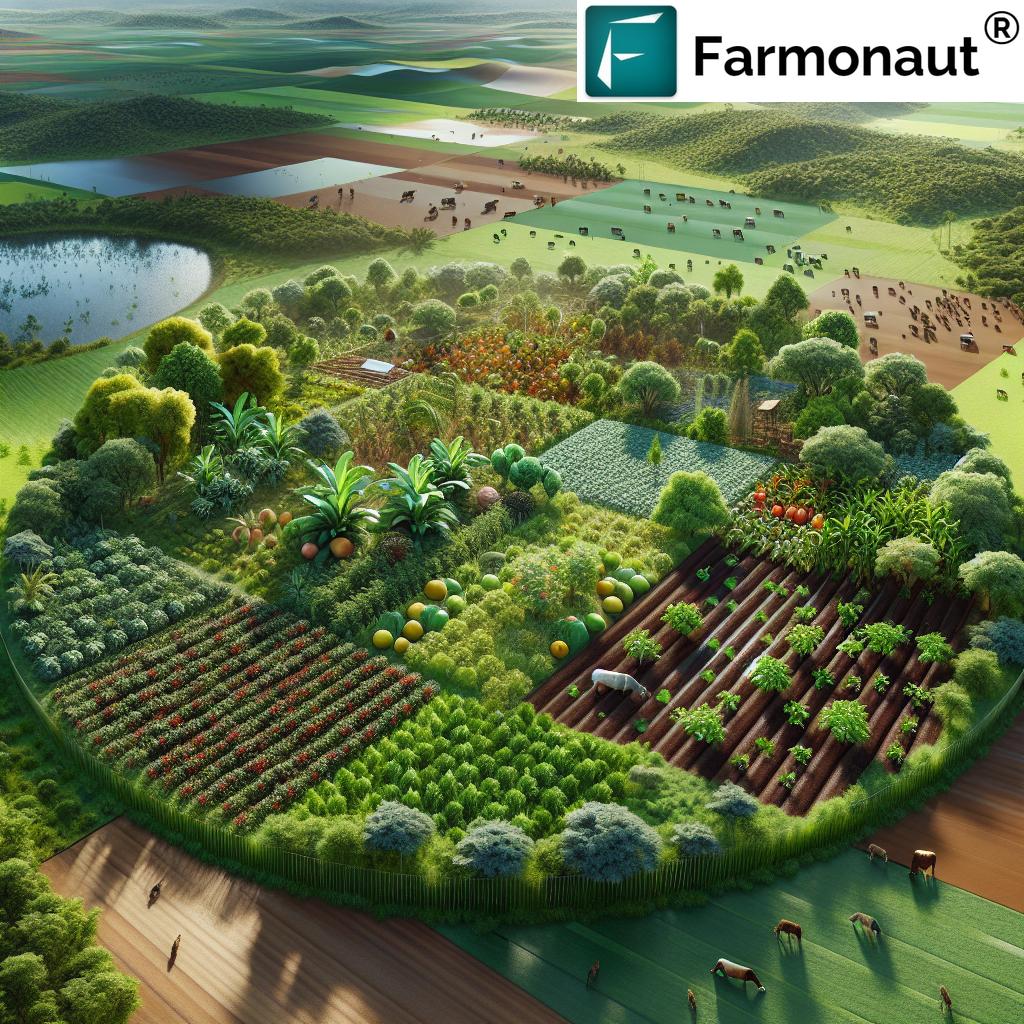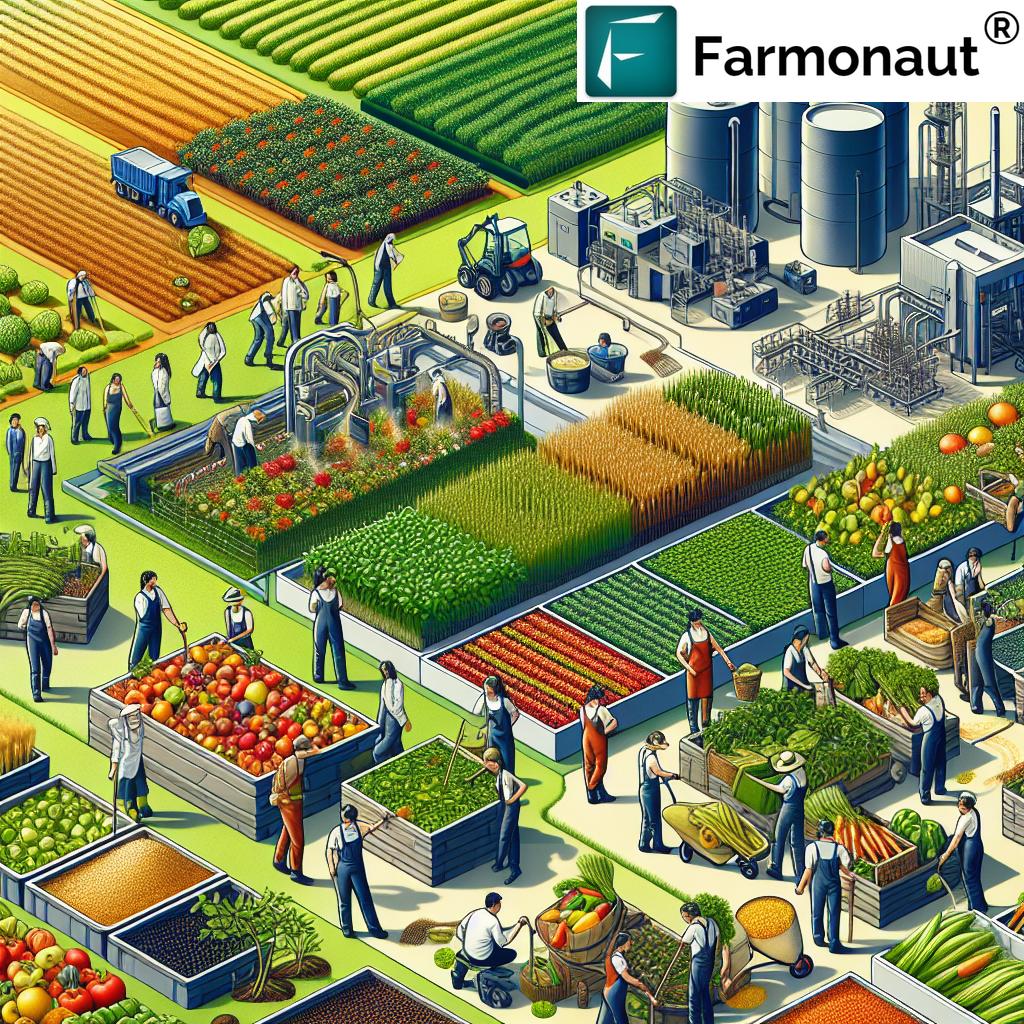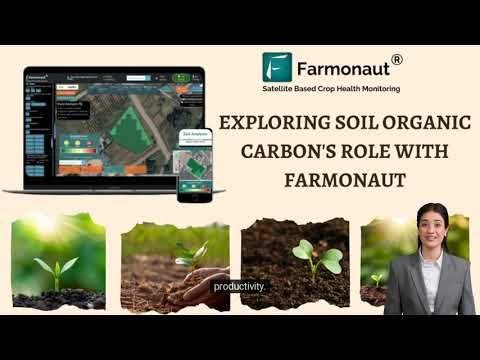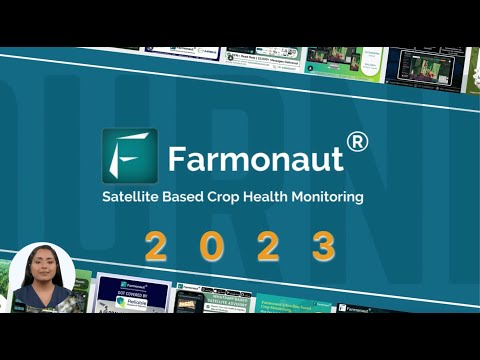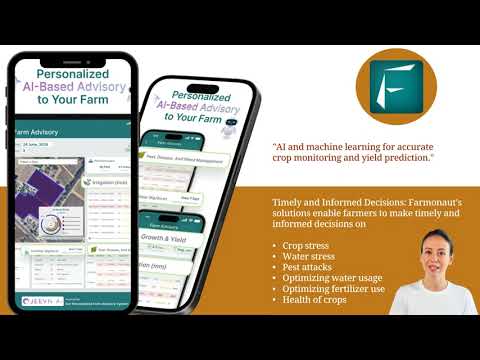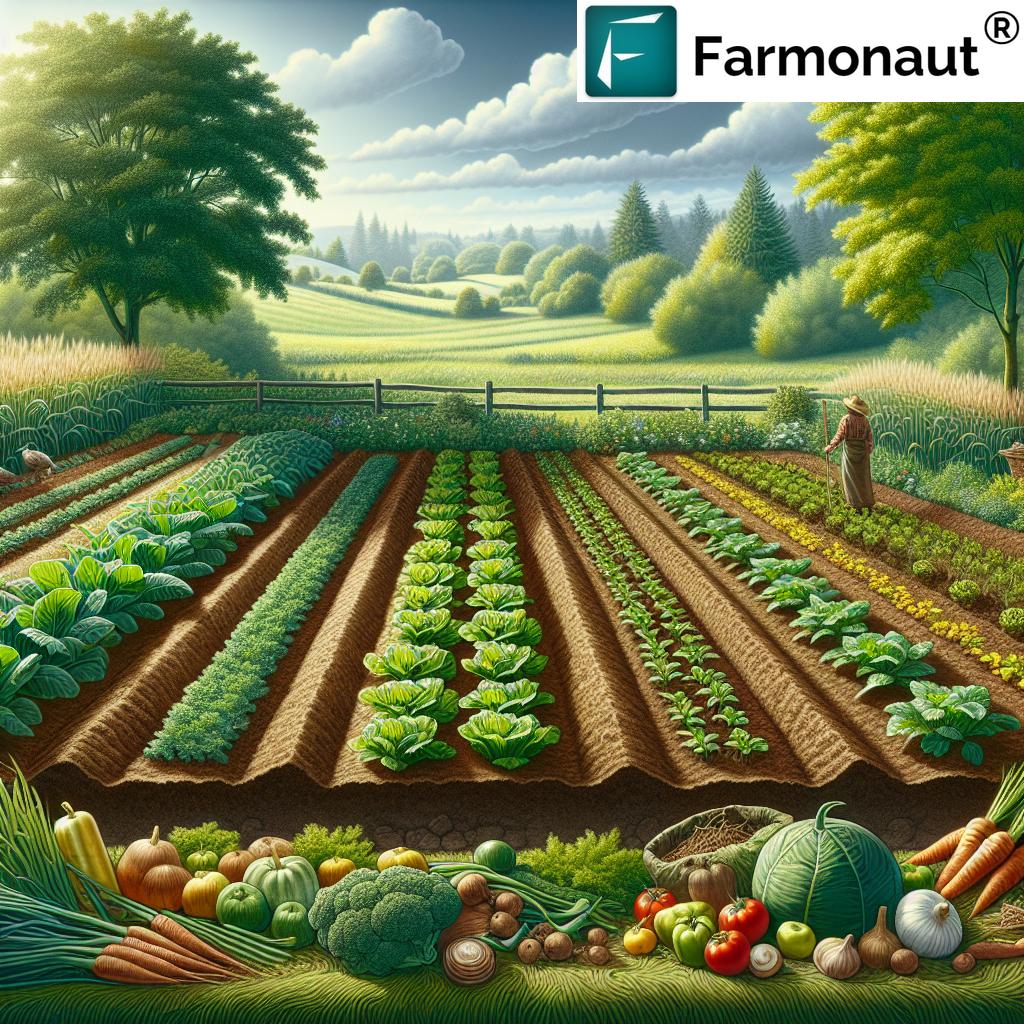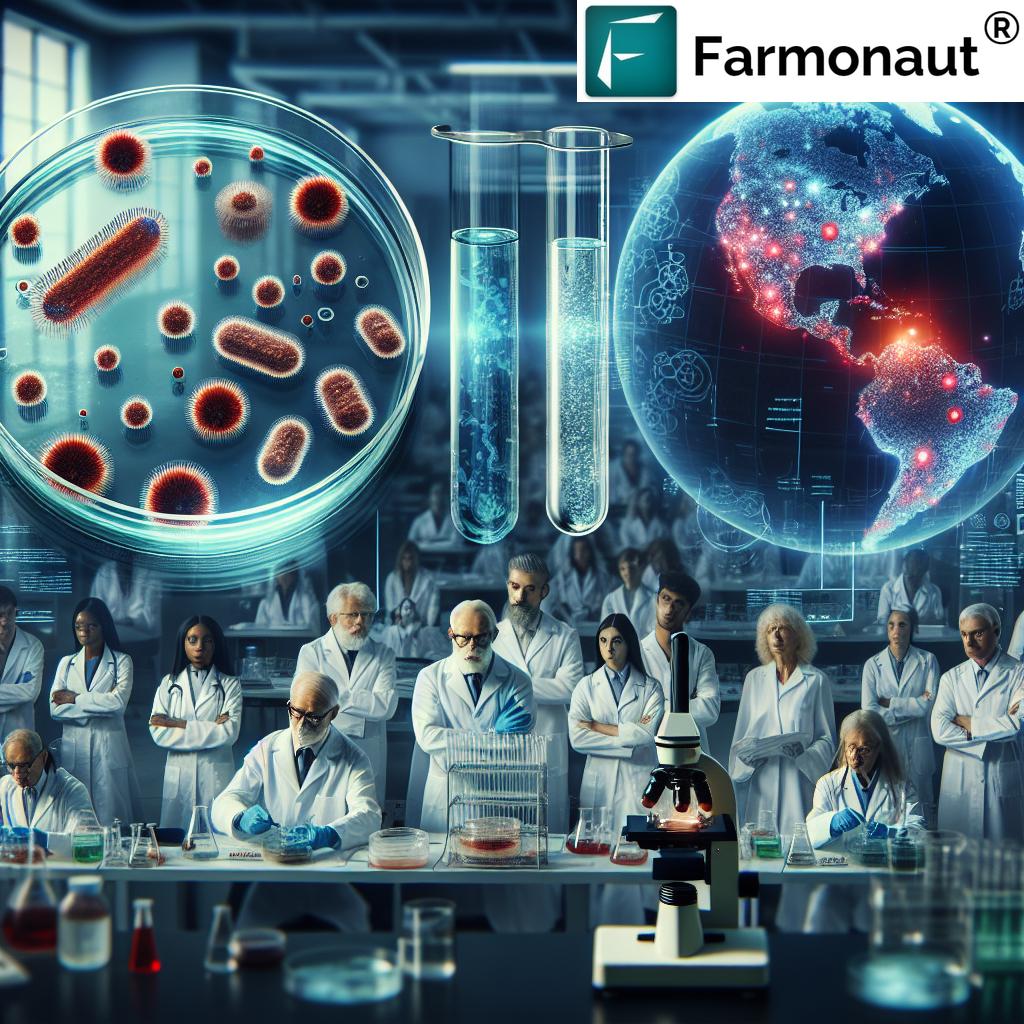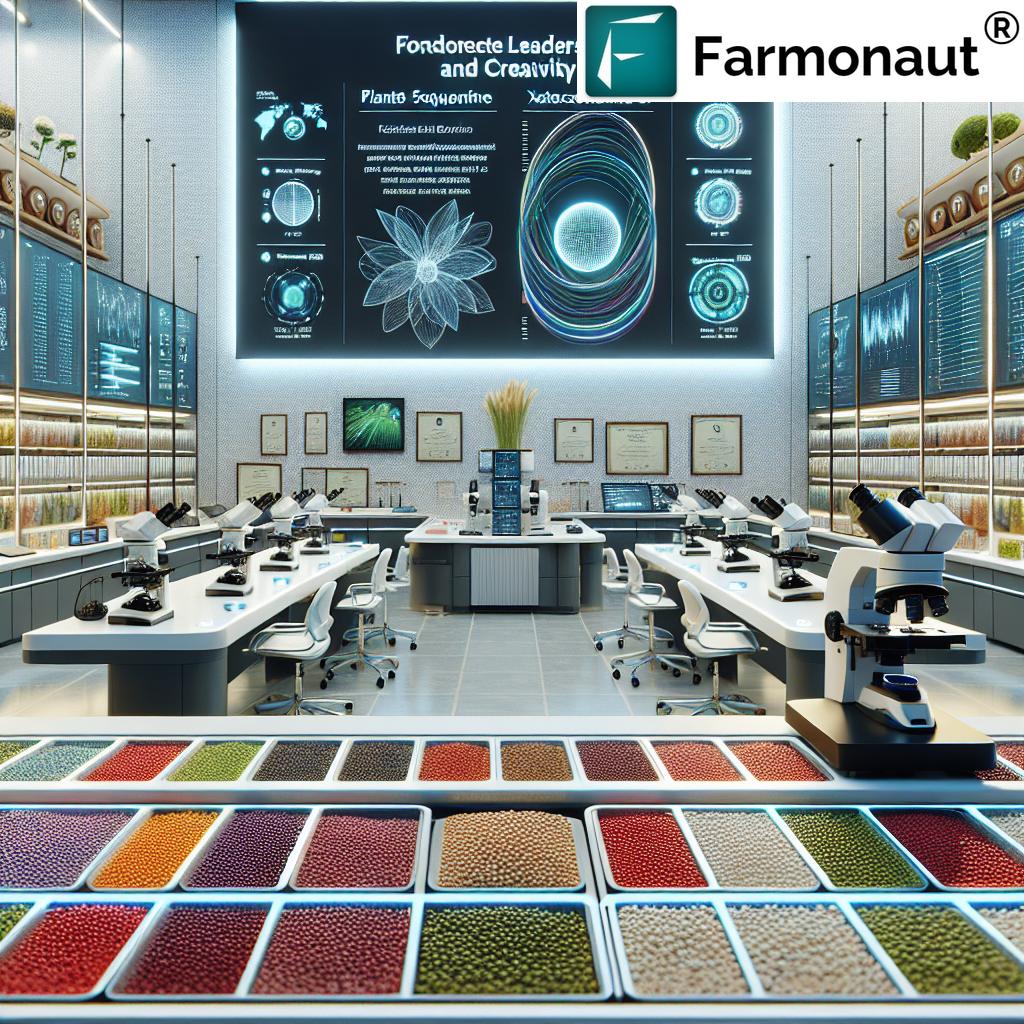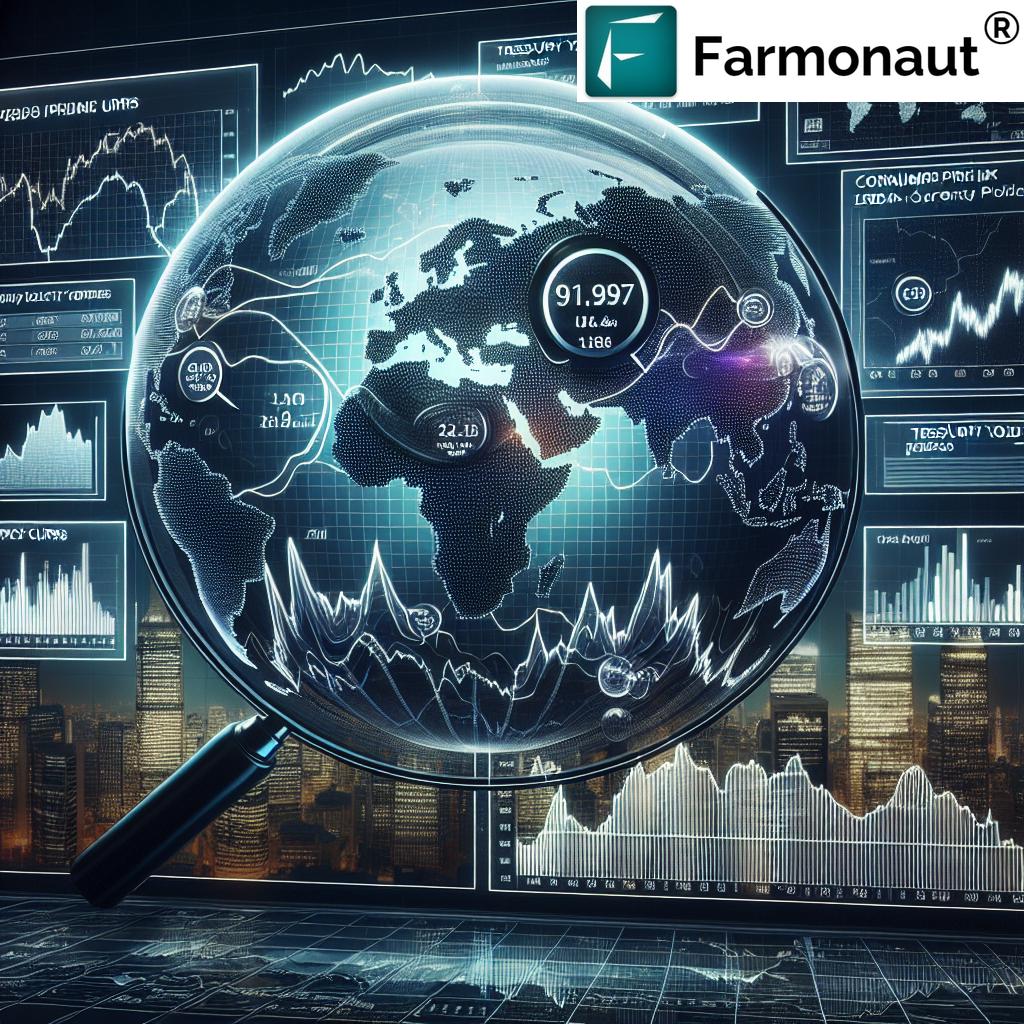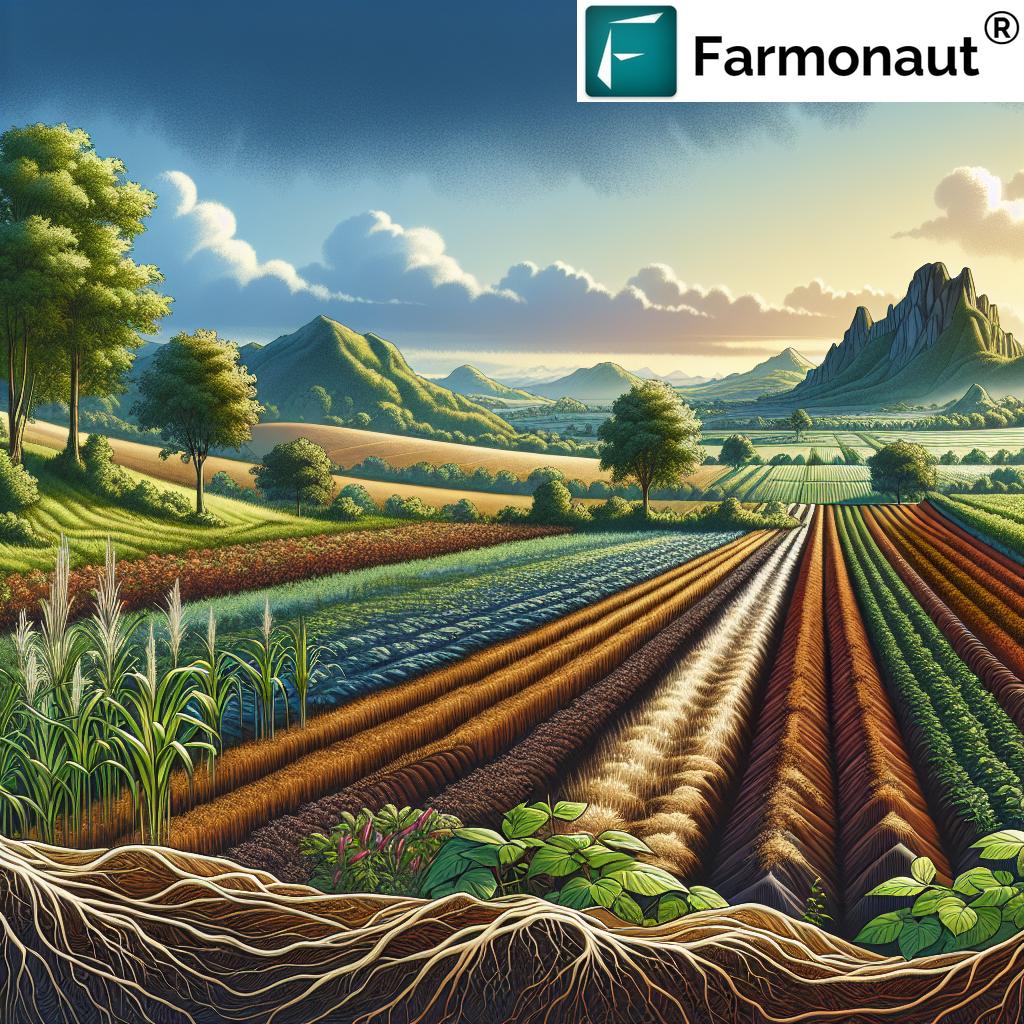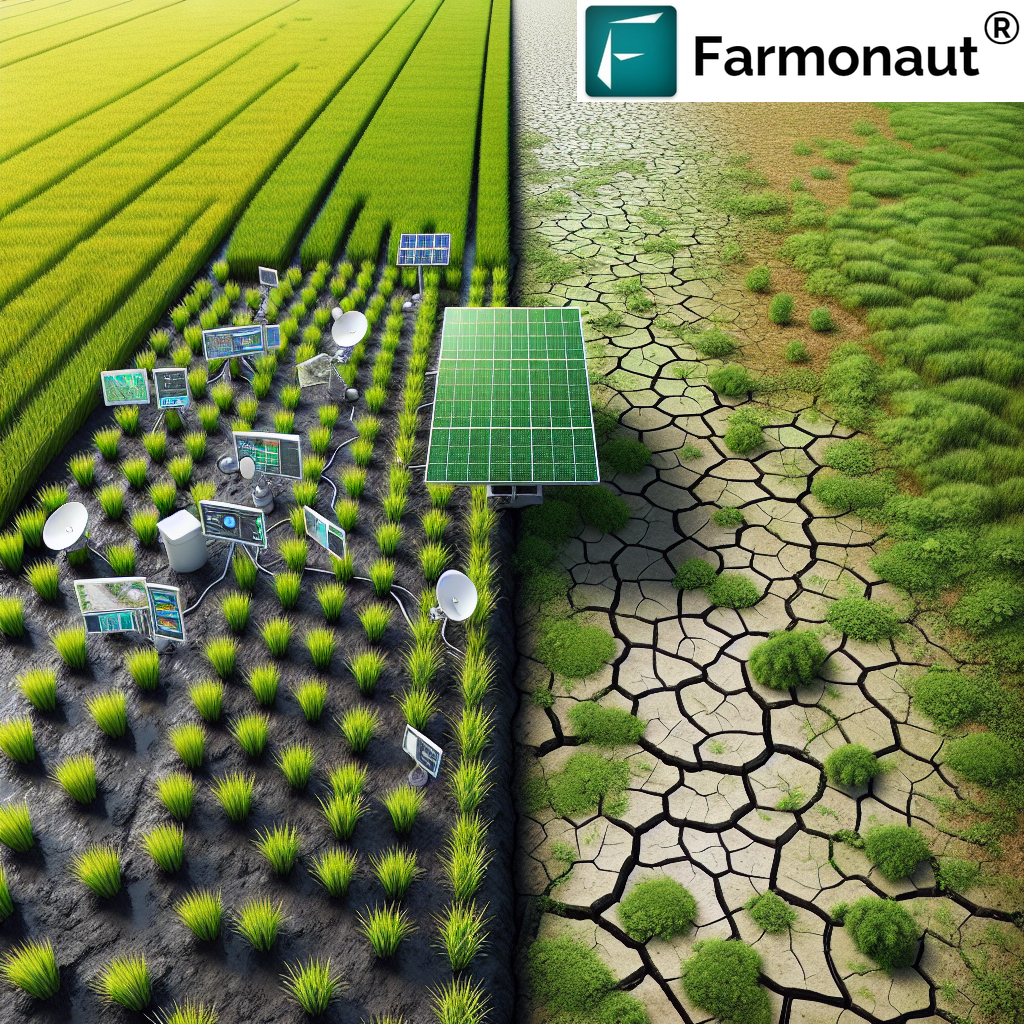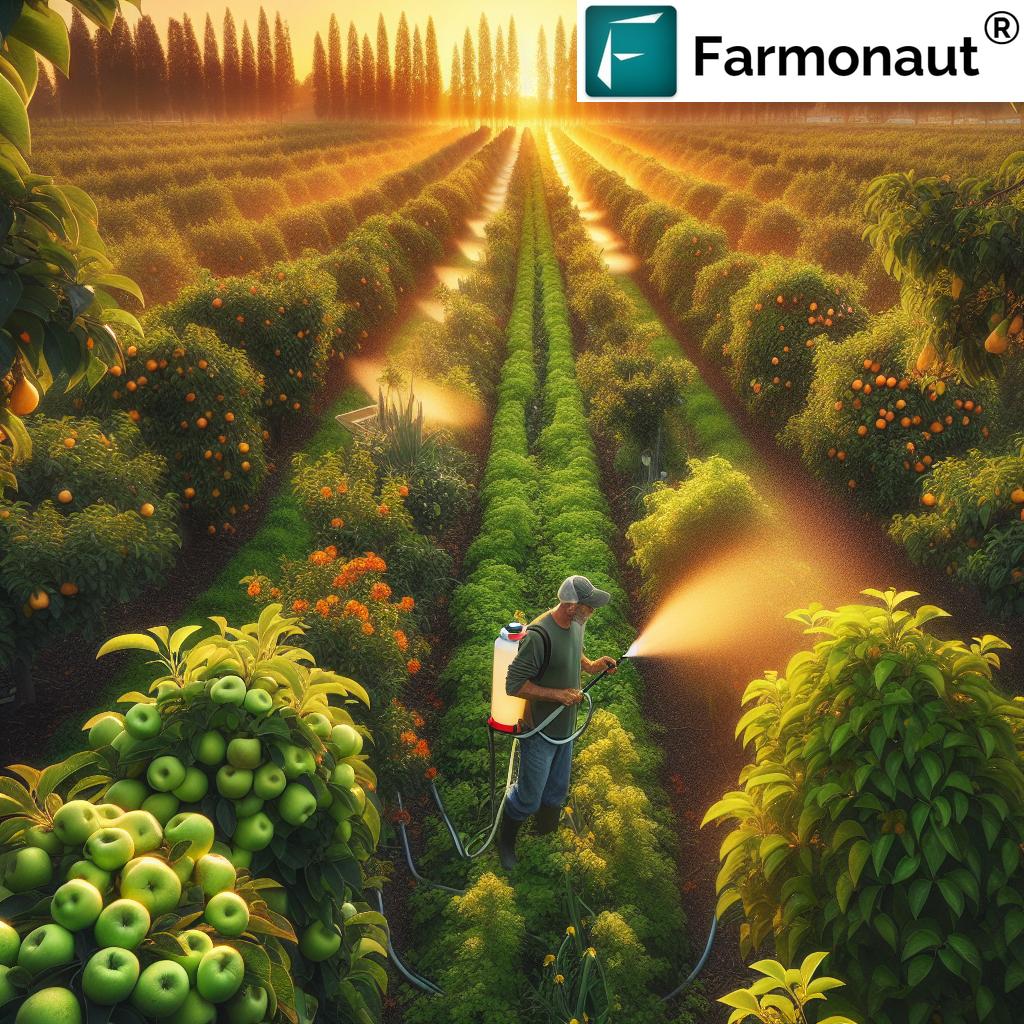Food Security: 7 Powerful Sustainable Agriculture Solutions
Introduction: What is Food Security?
Food security is one of humanity’s most fundamental needs. It is a multifaceted concept encompassing the availability, accessibility, utilization, and stability of food resources necessary to meet every individual’s dietary needs at all times. In the context of agriculture, farming, and forestry, achieving food security requires implementing sustainable agriculture practices that enhance productivity, preserve natural resources, and adapt to rapidly changing environmental conditions.
Our global system faces increasing threats from climate change, extreme weather events, loss of natural resources, and rising population growth. Agriculture must innovate, not only to meet demand but also to do so while reducing environmental impacts and boosting resilience. In this blog, we explore seven powerful, proven and emerging sustainable agriculture solutions that can enhance food security worldwide.
The Four Pillars of Food Security
Food security, as defined by international organizations, rests on four primary pillars:
- Availability: Sufficient quantities of food must be consistently available to all people at all times. Agricultural productivity, agroforestry, and effective resource management increase food availability.
- Accessibility: People must have both the economic and physical means to access food. Equitable markets, infrastructure, and support for vulnerable groups play vital roles.
- Utilization: The dietary utilization of food—meaning people can safely and effectively use food for good health. This includes having safe water, proper nutrition, and the biological ability to absorb nutrients.
- Stability: Access to adequate food should be stable, without risk of losing access due to sudden shocks (like conflict or extreme weather events) or cyclical crises.
Each of these pillars is threatened and shaped by climate change, demographic shifts, agricultural sustainability, land use, and economic trends.
Global Food Security Challenges
We face several intertwined challenges on the path to achieving global food security:
- Climate Change & Extreme Weather Events: Unpredictable rainfall, droughts, floods, and temperature spikes threaten crops, disrupt supply chains, and reduce agricultural productivity. In 2023, extreme weather was a leading driver for food insecurity in 18 countries, affecting more than 77 million people.
- Loss and Degradation of Natural Resources: Soil depletion, water scarcity, and deforestation undermine crop yields and stress our food systems.
- Population Growth & Rising Demand: With the population expected to near 10 billion by 2050, food demand continues to soar.
- Food Loss and Waste: Almost one-third of all food produced globally is lost or wasted, reducing availability, limiting accessibility, and squandering resources.
- Poverty and Inequality: Many people, especially in rural communities, lack the purchasing power and reliable access to secure, nutritious food.
Addressing these challenges demands a holistic approach, integrating sustainable agriculture practices—from field to policy and tech innovation.
Overview: The 7 Sustainable Agriculture Solutions
Empowering food security into the future depends on sustainable agriculture practices that restore, preserve, and reinvent the way we produce and access food. Here are our seven most impactful solutions:
- Agroforestry
- Climate-Smart Agriculture (CSA)
- Farmer-Managed Natural Regeneration (FMNR)
- Sustainable Forest Management
- Improved Farm Management & Precision Agriculture
- Reducing Food Loss and Waste
- Policy Innovation & Family Farming
1. Agroforestry: Integrating Trees for Food Security & Land Health
Agroforestry is a land-use system that integrates trees and shrubs with crops and/or livestock on the same land. This powerful practice combines forestry and agriculture, maximizing productivity, sustainability, and resilience.
- Diversified Food & Income: Agroforestry systems produce timber, fruits, nuts, and edible products, supporting nutrition and income for farming families.
- Agroforestry Benefits for Environment: Enhanced biodiversity, improved soil structure, reduced erosion, water retention, and mitigation of greenhouse gas emissions.
- Resilience to Climate Change: Mixed systems are less vulnerable to extreme weather events, drought or flood, thus enhancing stability of food supplies.
- Pest Management and Land Restoration: Trees and shrubs can provide habitat for beneficial organisms, naturally managing pests and improving farm microclimates.
For example, Farmonaut’s crop, plantation & forestry advisory tools make it easier for farmers to monitor integrated agroforestry plots, supporting efficient land management and sustainable yields.
2. Climate-Smart Agriculture (CSA): Adapting to a Changing Climate
Climate-smart agriculture (CSA) is an integrated approach to managing cropland, livestock, forests, and fisheries to address the challenges of food security and climate change. Its main goals are:
- Sustainably Increasing Productivity and Incomes: Using innovative techniques (like drought-resistant crops, digital decision tools, or better irrigation) to produce more with less.
- Enhancing Resilience and Adaptation: CSA prepares farmers to adapt to climate change in farming, making their livelihoods less vulnerable to shocks and extreme weather events.
- Reducing Greenhouse Gas Emissions: Techniques like no-till farming, integrated nutrient management, and carbon sequestration (for example, via Farmonaut’s carbon footprinting solutions) make agriculture a force for climate mitigation.
By adopting climate-smart solutions, global agriculture can continue improving productivity as climate conditions evolve and resources become more scarce.
3. Farmer-Managed Natural Regeneration (FMNR): Restoring Land, Boosting Yields
FMNR is a regenerative agriculture practice that involves the deliberate selection, protection, and sustainable management of natural tree regrowth (regeneration) on farms, pasture, or degraded land. Instead of costly tree planting, farmers regenerate existing rootstocks, seeds, and stumps.
- Enhances Soil Fertility & Moisture: Reintroducing trees increases soil organic matter, reduces erosion, and improves water retention—leading to increased crop yields.
- Improved Ecosystem Health: Restores biodiversity and buffers against adverse weather (& climate extremes).
- Low-Cost & Farmer-Led: Requires limited investment beyond training and labor, making it ideal for smallholder farming and resource-poor regions.
- FMNR as Sustainable Agricultural Management: Supports carbon sequestration, land restoration, reducing desertification, and ensures food security by improving yields at minimal cost.
Platforms like Farmonaut empower FMNR by providing satellite-based monitoring to visualize regrowth, track soil quality, and guide regeneration strategies.
4. Sustainable Forest Management: Ensuring Stability & Biodiversity
Our forests are crucial not only for timber, fuel, and ecosystem services, but also for food security. Well-managed forests provide fruits, nuts, mushrooms, edible leaves, and bushmeat—critical in rural diets and as fallback in times of crop failure.
Sustainable Forest Management (learn more here) means carefully monitoring forest resources, setting harvest limits, promoting regeneration, and ensuring both short- and long-term ecosystem productivity.
- Food & Nutrition Insurance: Forest products fill nutrient gaps and bolster dietary diversity, particularly in food-insecure regions.
- Biodiversity & Ecosystem Restoration: Natural forests safeguard thousands of plant species and animal habitats, ensuring future food, medicinal, and genetic resources.
- Economic Livelihoods: Many communities earn crucial income from forest products.
Farmonaut’s real-time forest monitoring can assist in preventing illegal logging, guide sustainable harvesting, and power supply chain transparency with blockchain-based traceability solutions (read more).
5. Improved Farm Management & Precision Agriculture
Precision agriculture and improved farm management harness technology and data to boost productivity while reducing resource waste:
- Satellite Imaging & AI: Tools like Farmonaut (large scale farm management) use multispectral satellite imagery, AI advisory (Jeevn) and weather analytics to deliver field-level insights for irrigation, fertilizer application, and early warning of crop stress or pest outbreaks.
- Resource Efficiency: Improve water, fertilizer, and land use through targeted action—minimizing environmental loss and cost.
- Supply Chain Optimization: Real-time tracking through advanced fleet and resource management reduces spoilage, ensures timely harvest and delivery, and cuts operational waste.
- Data-Driven Decisions: Leveraging platforms like Farmonaut enables rapid scaling of sustainable agriculture practices for both individual and large agribusinesses.
These technology-driven strategies ensure crops are grown in the right place, at the right time, and with optimal efficiency—core to improving agricultural productivity now and in the future.
6. Reducing Food Loss and Waste in the Supply Chain
Nearly a third of all food produced—an estimated 1.3 billion tonnes per year—is lost or wasted globally, especially post-harvest or in supply chains. Reducing food loss and waste is essential to:
- Enhancing Availability & Accessibility: Saving food that would otherwise be lost directly increases the amount available for consumption.
- Improving Economic Returns: Less waste means higher realized income for farmers and agribusinesses.
- Reducing Environmental Impact: Decreases resource wastage—less land, water, fertilizer, and energy are used per calorie delivered.
- Boosting Stability: Food system shocks are cushioned when reserves and supply-chain resilience are enhanced.
Sensors, inventory management systems, and satellite-powered logistics like those offered by Farmonaut’s fleet/resource management help pinpoint where losses occur and respond with actionable interventions.
7. Policy Innovation & Empowering Family Farming
Globally, more than 80% of food is produced by family farms. Supporting smallholder and family farmers through policy innovation is central to achieving food security:
- Credit & Insurance Access: Affordable crop loans and risk management insurance (via platforms like Farmonaut’s crop loan and insurance verification services) enable farmers to invest, innovate, and recover from shocks.
- Investment in Extension and Advisory: Digital advisory (e.g., Farmonaut Jeevn AI advisory) upskills farmers and makes new knowledge accessible at scale.
- Encouraging Sustainable Practices: Direct support for FMNR, CSA, and conservation agriculture boosts long-term food system resilience.
- Equitable Land and Gender Policies: Secure land tenure, women’s empowerment, and fair market access drive inclusive agricultural growth.
The UN Decade of Family Farming (2019–2028) exemplifies global efforts to recognize and invest in family farmers, ensuring policies support adoption of sustainable, productive, and resilient systems.
Farmonaut: Satellite, AI, and Data Power for Sustainable Food Security
Technology underpins every modern, sustainable agriculture solution. Farmonaut is a leading-edge agricultural technology platform that brings affordable, accessible precision agriculture tools and data-driven insights directly to the hands of farmers, agribusinesses, and governments, globally.
- Real-Time Crop Health, Soil, and Weather Monitoring: Using satellite imagery and metrics like NDVI (Normalized Difference Vegetation Index), Farmonaut helps users continuously track field-level vegetation health, soil moisture, and crop productivity.
- AI-Based Advisory (Jeevn): Personalized recommendations about irrigation, fertilization, yield optimization, and risk mitigation improve sustainable management across varying contexts and crop cycles.
- Blockchain Traceability: Farmonaut’s traceability systems ensure food origins and supply chain movements are transparent—addressing both food safety and consumer trust.
- Resource & Fleet Management: Farmonaut enables efficient use of machinery, vehicles, and labor via satellite monitoring and analytics—cutting costs and reducing waste.
- Support for Loans and Insurance: Satellite-based farm verification gives banks the confidence to offer affordable credit and guarantee policies to farmers, opening access to investment and security.
- Carbon Footprinting: Track and reduce your operation’s carbon footprint with real-time, actionable data (learn more here).
Get Started:
Whether you are a smallholder, cooperative, large agribusiness, tech developer, or policymaker, Farmonaut makes sustainable agriculture accessible, scalable, and affordable—directly supporting food security for people and planet.
- Web, iOS, Android, & API Access: Use Farmonaut anywhere, anytime. Open our Web App or explore the Farmonaut API and API Developer Docs for integrations.
Comparative Solutions Impact Table
The table below summarizes estimated impacts and qualitative insights for each of our seven sustainable agriculture solutions. Values are generalized for comparison. Actual impact will vary by location, farm size, climate, and integration.
| Sustainable Agriculture Solution | Description | Estimated Yield Improvement (%) | Resource Efficiency (Water/Land Use Reduction %) |
Climate Resilience Score | Relevance to Food Security |
|---|---|---|---|---|---|
| Agroforestry | Trees & crops/pasture integrated on farmland | 20–40% | 15–30% | High | Diversifies food, boosts resilience, and stabilizes income |
| Climate-Smart Agriculture (CSA) | Adaptation, resilience, emissions & sustainable intensification | 15–79% | 10–25% | High | Tackles climate threats, maintains yield, future-proofs farming |
| FMNR | Farmer-led restoration of natural vegetation | 10–50% | 10–30% | High | Restores land, improves soil, affordable for smallholders |
| Sustainable Forest Management | Balanced forest use for timber, food, biodiversity | 10–20% | 20–40% | High | Ensures NTFP supply, nutrition, and ecological stability |
| Improved Farm Management & Precision Ag | Technology & data for optimizing input, fleet, logistics | 15–30% | 10–25% | Medium–High | Boosts efficiency, traceability, and market supply |
| Reducing Food Loss & Waste | Supply chain, post-harvest, logistics optimization | 10–20% | 10–20% | Medium | Directly increases food available for consumption |
| Policy Innovation & Family Farming | Inclusive policy & investment in family farms | 10–30% | 5–15% | Medium–High | Builds base for scalable solutions & stable rural economies |
Get Started with Farmonaut: Subscription Plans
Choose a Farmonaut subscription that fits your needs—scale from a single field to entire regions! For pricing plans and details:
FAQ on Food Security & Sustainable Agriculture
-
Q: What is food security?
A: Food security is when all people have physical, social, and economic access to sufficient, safe, and nutritious food at all times to meet dietary needs and food preferences for an active and healthy life. -
Q: What are the four pillars of food security?
A: Availability, accessibility, utilization, and stability—covering everything from food production to effective use and the ability to access food steadily, even during shocks. -
Q: How can sustainable agriculture practices enhance food security?
A: By increasing yields, diversifying nutrition sources, restoring land, conserving resources, and building resilience against climate change and market shocks. -
Q: What is climate-smart agriculture?
A: An integrated approach to food production that boosts productivity, adaptation, and mitigation to climate change with minimal negative environmental impact. -
Q: How do technology and data help in achieving food security?
A: Technology—from satellite monitoring to AI-powered advisories—helps farmers make precise decisions, reduce inputs, save money, and increase yields while minimizing resource losses and environmental damage. -
Q: What is the importance of reducing food loss and waste?
A: Less food wasted means more available for people, higher returns for farmers, and lower demand on water, land, and energy resources. -
Q: How does Farmonaut contribute to sustainable agriculture and food security?
A: Farmonaut puts affordable, real-time satellite data, AI advisories, resource management, and traceability solutions in the hands of farmers and agribusinesses, globally—empowering increased productivity, sustainability, and resilience.
Conclusion: Our Path to Food Security & Sustainability
Food security is not a distant goal, but an urgent, ongoing challenge—one that requires commitment, innovation, and collaboration across every level of the food system.
By grounding our approach in the four pillars of food security, embracing the seven sustainable agriculture practices discussed, and leveraging cutting-edge platforms like Farmonaut, we can create resilient, efficient, and productive food systems. Whether you are a farmer, policymaker, entrepreneur, or consumer, adopting, advocating, or supporting these strategies will contribute to a world where food is abundant, accessible, nutritious, and sustainable—for all communities, now and for generations to come.
Together, let’s cultivate innovation, restore ecosystems, and secure our food future!


